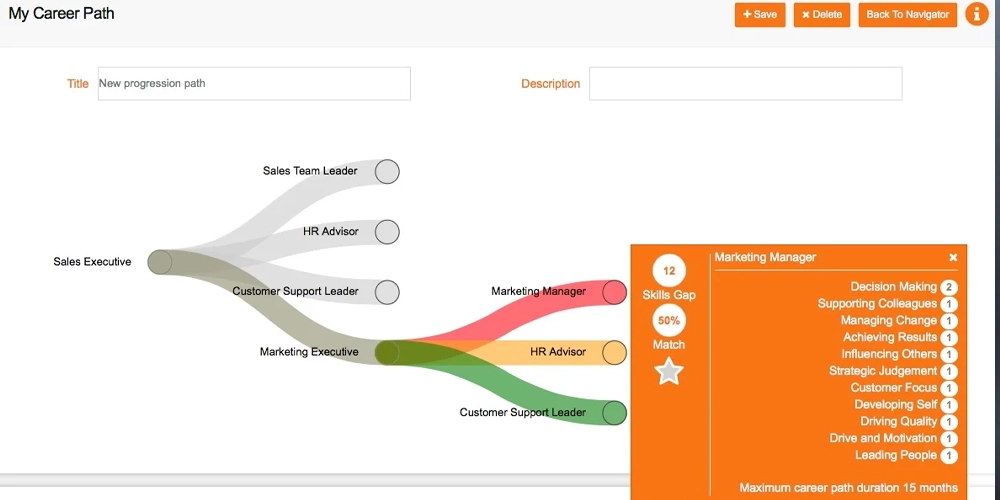Home » Products Overview » Talent Navigator
Talent Navigator
Career path mapping to engage your people in their future careers.
Individual career ownership through career path mapping
Talent Navigator enables employees to create – and work through – their own meaningful career paths based on their aspirations, interests and strengths.
Creating career paths and exploring their impact is fundamental to having meaningful and actionable career conversations with a line manager.
Head Light’s Talent Navigator empowers your employee to manage their career.
Engage and retain talent.
Encourage your employees to explore and map out their future careers within your organisation, helping them to be take control of their own development
Show them future career paths – whether linear or lateral career moves – and give them the information on which to start a career conversation with their manager.
Spot the skill gaps.
Talent Navigator identifies the skills needed for future roles, providing the framework to map multiple career path scenarios, review role competencies and plan the next steps.
When integrated with a skills assessment such as Talent 360, it highlights the skills gap to be filled and flags relevant learning and development options.
Using this career path mapping software will:
- Enhance internal mobility.
- Encourage upskilling and reskilling.
- Focus development planning and career conversations based on real information.
- Show employees possible career routes and unseen opportunities.
- Promote greater accountability for own career development.
- Create greater cross-divisional and functional working.
- Offer insights for succession planning.
- Provide the basis for an Academy to develop higher performance within a specific function.
Watch our Talent Navigator videos
Additional Information
- Multi-lingual interface and preferred language settings
- Create Skills, Capability, Qualification Frameworks
- Administrator to ‘connect’ roles together using progressions
- Role profiles can include ‘Day in the Life’ free text in html
- Ability to search for and create favourite roles
- Ability to store career paths created using Path Finder and/or Path Builder tools
- Ability to show overall summary information that allows the comparison of different paths
- End-user functionality to edit an About Me skill profile
- Reports include summary usage, average number of career paths, most common favourite roles etc
Ready for the next step?
We’d love to explore with you how our online career planning software may support you – and we can do this by taking you through a demonstration.
Please complete the form and we’ll get back to you to confirm and send you details.
Frequently Asked
Questions
It helps employees explore and map out potential career paths and suggests the skills and competencies needed to progress. When integrated with 360-degree feedback, it flags skills gaps.
Employees get to try out – and save – various career path options, mapping the skills they have with those needed in other roles. It highlights skills gaps, so helps to focus on the development needed.
It shows your commitment to talent mobility. Employees can use software as a career path builder to visualise future career options, potential career trajectories and see the steps needed to progress.
Career pathway tools consider current skills and those skills needed for possible future roles. The software flags and presents the skills gap to guide individual (or group) development effort.






